Meet & Eat @ Apple Foundation Program
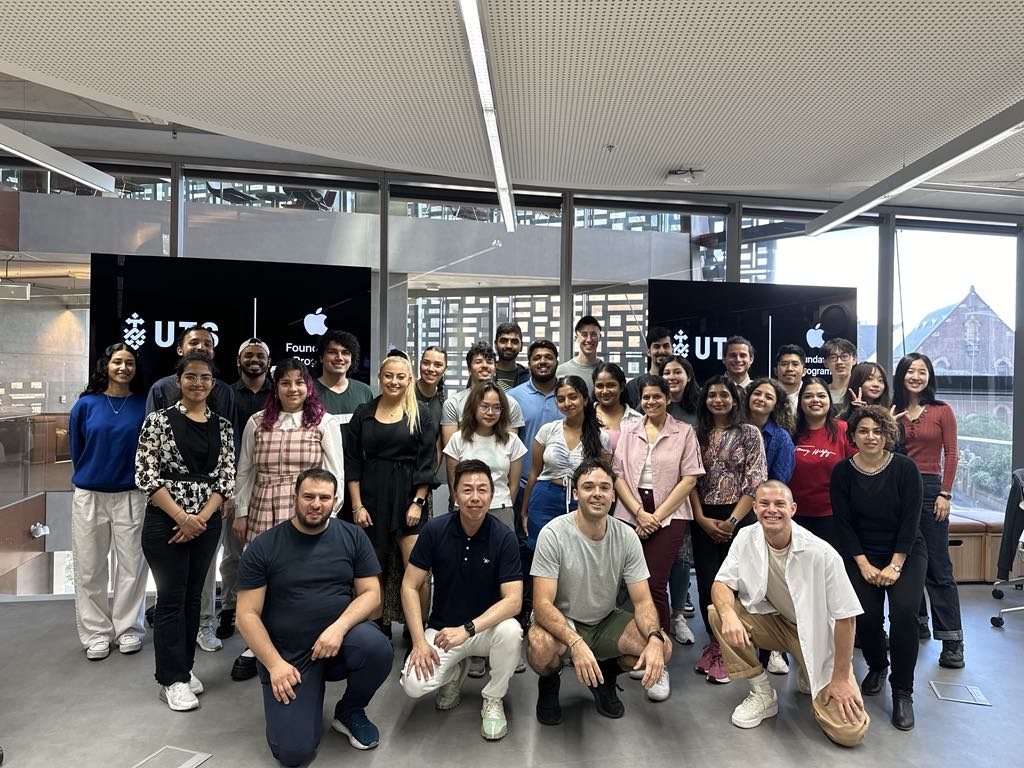
A project to help university students connect and explore different cultures.
1. Design Process
We followed a human-centered design process, starting with identifying real problems students face when trying to connect and engage across cultures. We moved through research, defining a clear user need, ideating possible solutions, and finally prototyping an app that addresses this need in a simple, actionable way.
2. Research
We began by understanding the challenges students face when navigating cultural differences and building social connections at university.
Brainstorm & Challenge questions
We brainstormed broad questions to guide our thinking: Why do some students struggle to form meaningful connections? How can food be a vehicle for cultural exploration? What makes cross-cultural communication difficult or awkward?

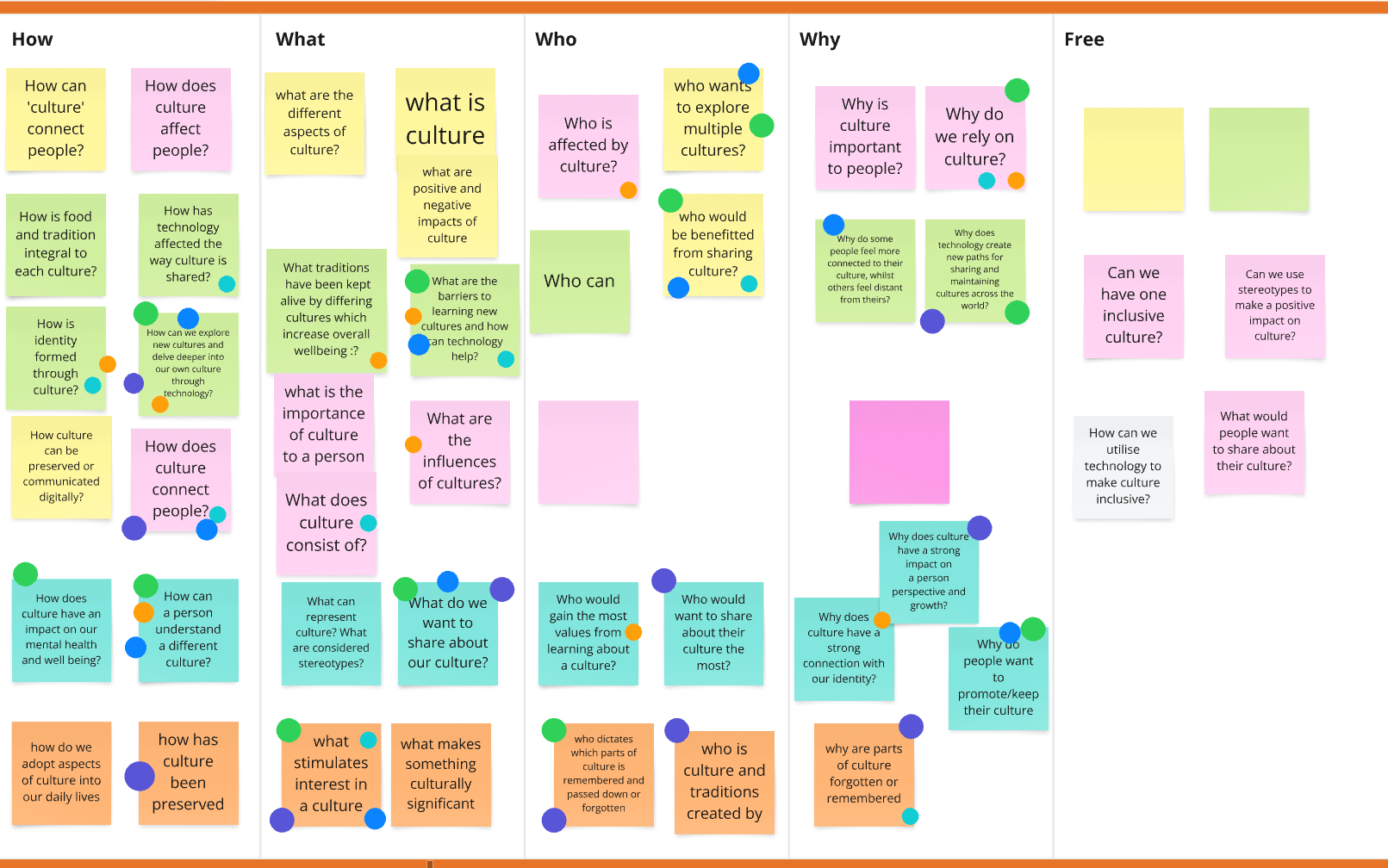
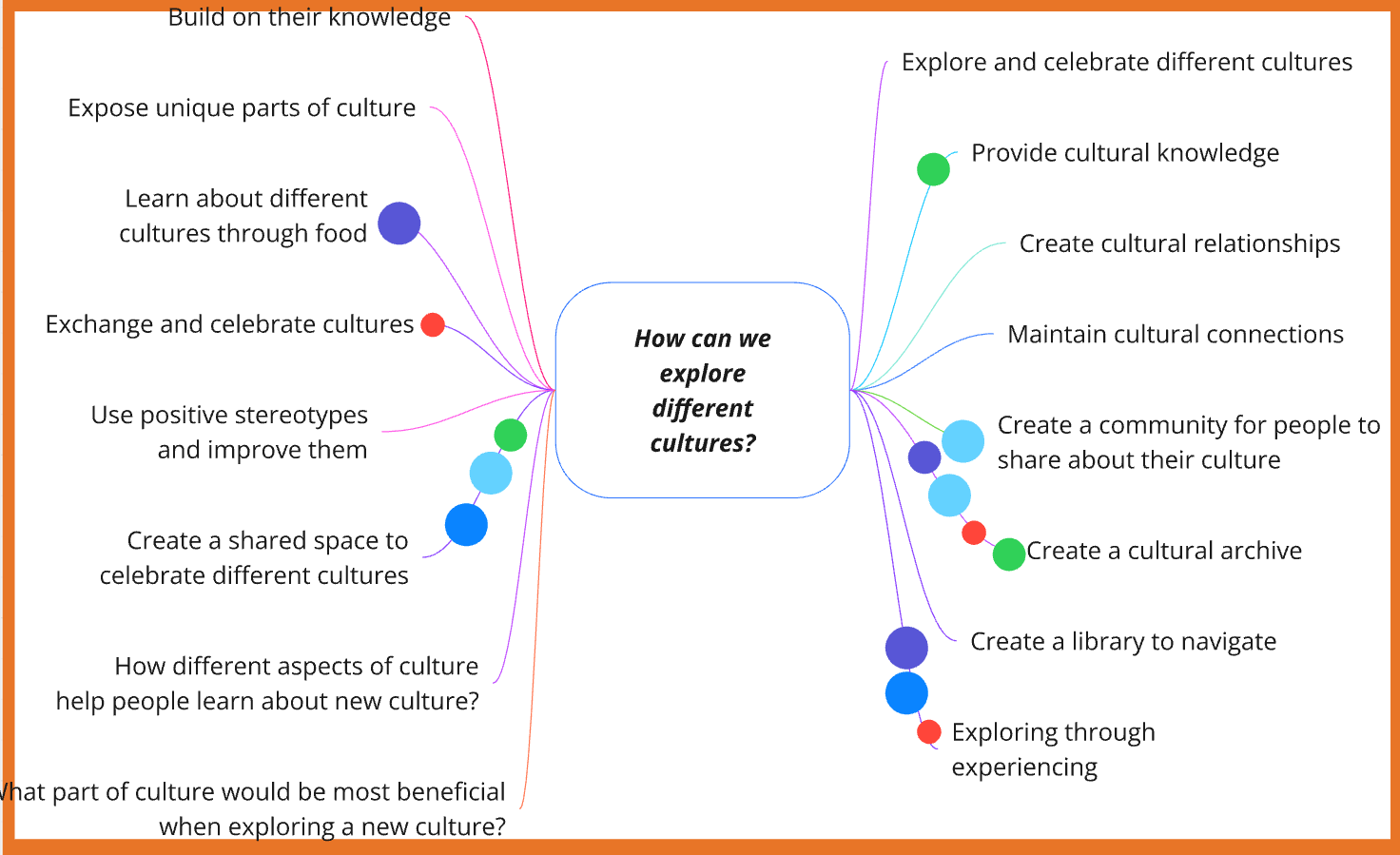
From these, we shaped our:
BIG IDEA
CULTURE (food, history)
ESSENTIAL QUESTION
How can we explore different cultures?
CHALLENGE STATEMENT
Create a positive space to foster cultural knowledge
Primary Research
We interviewed international students and local students to understand their experience with culture-sharing and making new friends. Many shared that while events existed, they often felt surface-level or difficult to access.
.png)
.png)
.png)
.png)
.png)
.png)
Interview
Interview Insights Food was the most comfortable and exciting way for people to connect. Students often felt shy initiating conversations, especially with cultural or language barriers. Many wanted to share their own culture but didn’t know how or where to start.
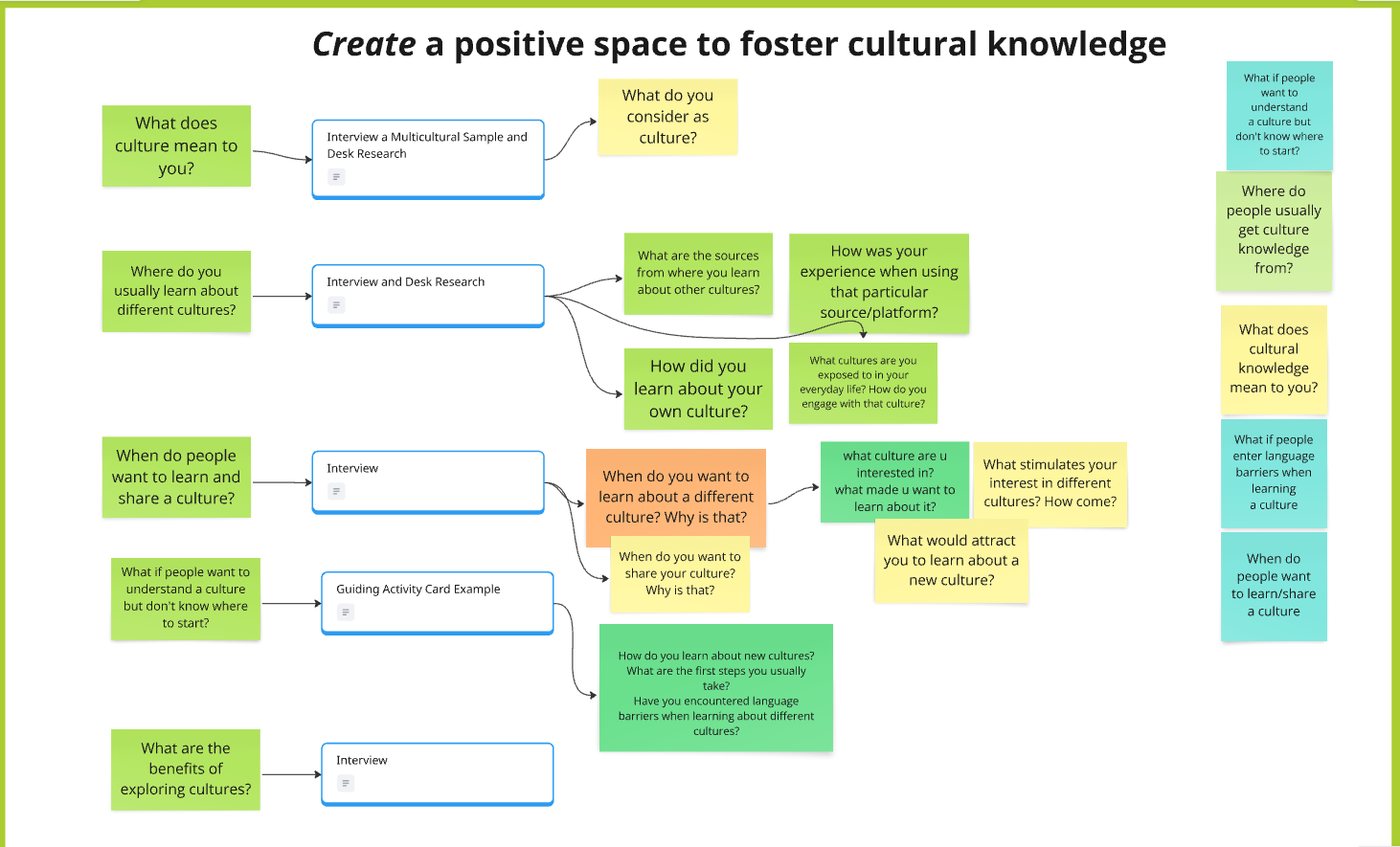
3. Define
Persona
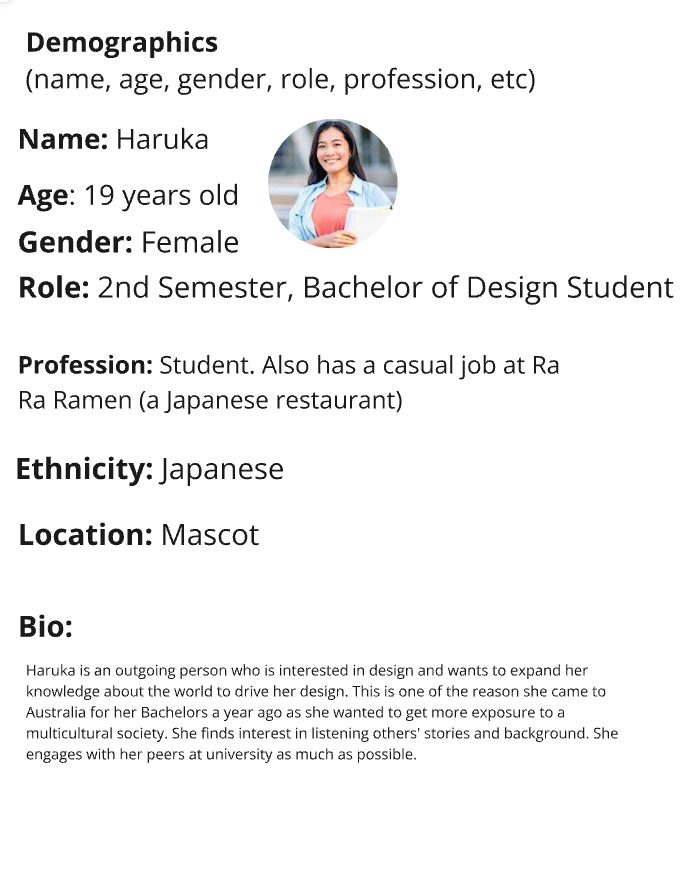

Bio
Haruka is an outgoing person who is interested in design and wants to expand her knowledge about the world to drive her design. This is one of the reason she came to Australia for her Bachelors a year ago as she wanted to get more exposure to a multicultural society. She finds interest in listening others' stories and background. She engages with her peers at university as much as possible.
Scenrio
Haruka came across an egyptian food tik-tok and wanted to go try egyptian cuisine, but didnt know any good restaurants nearby to explore or experience it. She doesnt know anyone to give her any good recommendations either. Haruka was working in a group project, and her group mates kept using lingo and colloquial language that she didn't quite understand, it was difficult for her to take a full grasp of the group's conversations. Because of this reason she is too nervous to initiate or engage in conversation. She struggled to come up with topics to talk about After her 1st semester, Haruka has managed to make a few friends after joining many university societies and attending countless events, however is still feeling very isolated and unable to initiate and hold conversations that are more than surface-level. She lives at the university student accomodation where she has exposure to other cultures, however isn't too sure
Design Mandate
Design a way for students like Haruka to confidently explore different cultures and connect with others through shared experiences, with food as the central connector.
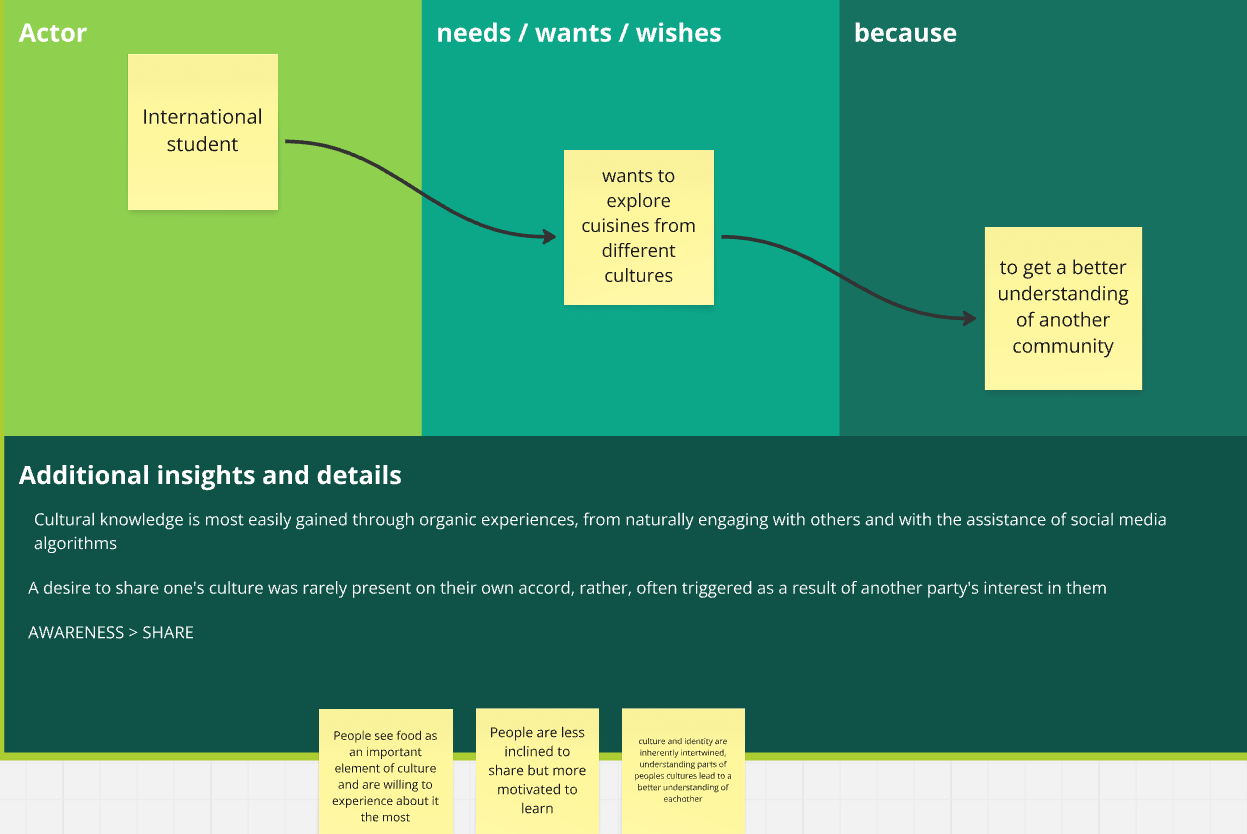
4. Ideation
Concept card
Our idea was to build a platform where students can match with others based on their interest in different cuisines and cultures. They can either host a small meet-up or join one, with the focus on trying a new cultural dish, sharing stories, and building real connections.
.png)
.png)
SOLUTION CONCEPT
An interactive platform which matches university students to make meaningful connections by meeting in person to host and explore food from different cultures
Wireframe
We sketched wireframes showing: A clean onboarding flow where users select cuisines or cultures they’re curious about A calendar-style interface for hosting or joining events Conversation prompts and cultural tips to help students break the ice


5. Final Design
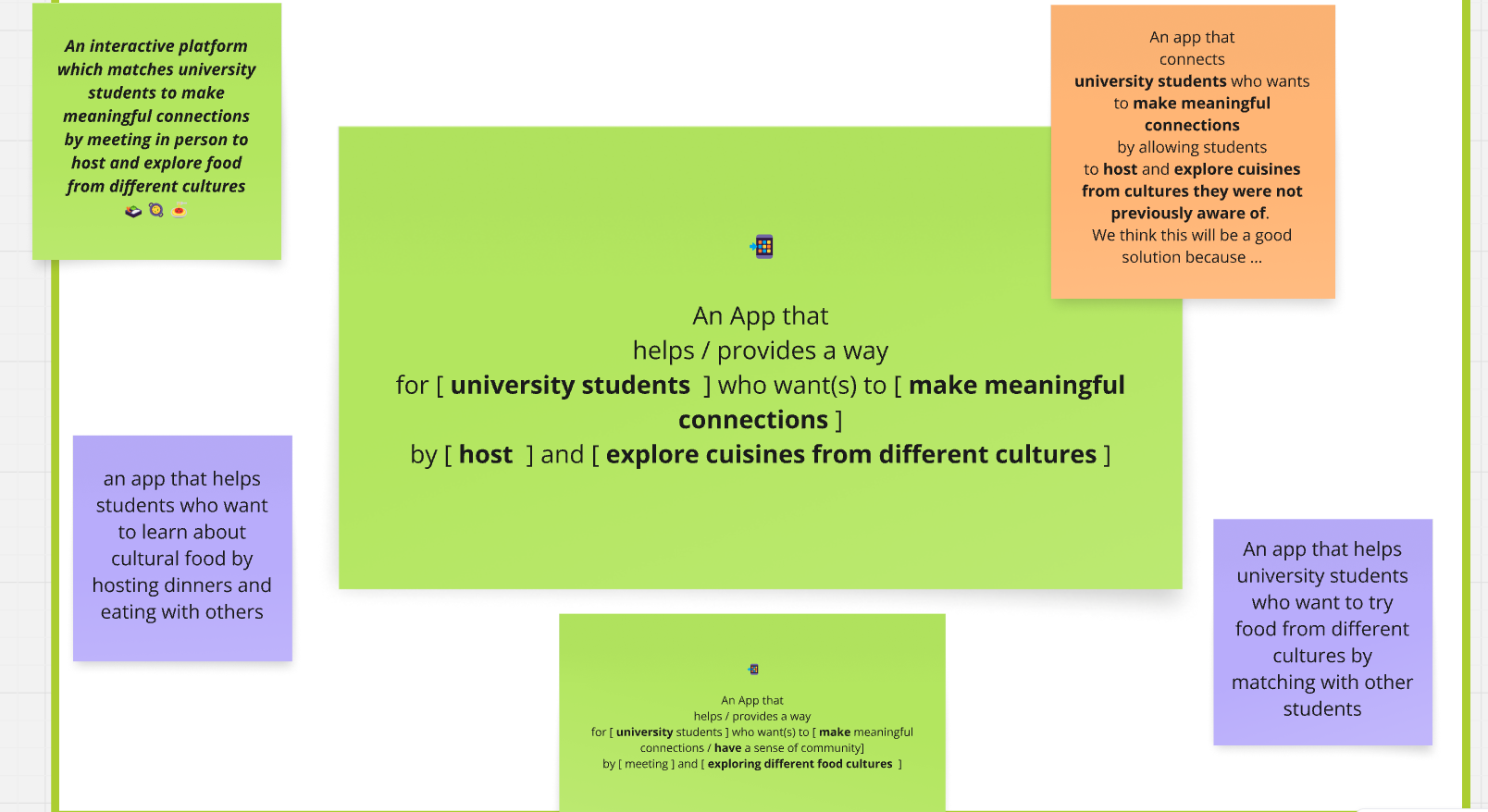
.png)
.png)
Prototype using Swift
We developed a basic prototype using Swift that demonstrates: User onboarding and preference selection Event creation and joining Suggested conversation starters and food facts The goal wasn’t to build a full product, but to visualize how this idea could become a real tool for students to turn cultural curiosity into real connections.